I began investing at Lending Club in 2011. When I first started, investing was largely the same as it is today. Back then it was easy to see that Lending Club was where I could earn interest by lending money to people. I recall looking at the Lending Club website and saying to myself, “Ok, so borrowers make monthly payments until the loans are paid in full, and I just take these payments and invest in more loans.” I remember thinking, “This is simple. This makes sense.” So I signed up.
Lending Club’s website does not have a list of tips for increasing returns
Today in 2014, investing at Lending Club is still simple. But like 2011, Lending Club’s website does not really have a list of tips for investors to increase returns. And if you’re like me, you want to earn the highest return you can. To help out new investors, I’ve listed the seven main strategies that people use to increase their returns. We’ll start with the simple ones and then move on to a few more advanced approaches. Let’s get started.
5 Simple Ways to Increase Returns at Lending Club
#1: Diversify your account in 200+ notes
The simplest, most powerful and important thing every single investor needs to do is diversify their account. Nothing else compares. When I encounter people who have a negative experience at Lending Club, the main reason for their troubles is usually their own failure to spread their investment across enough notes. Here’s a comment someone left on LendingMemo’s site last year:
“I speak from experience that this is a good way to lose your money with almost no recourse. I invested in 12 loans rated A or B, and 8 defaulted.”
This investor likely lost 60% of his invested cash, but that is because they were poorly diversified. If just one default happens to a person who invests across only twelve notes, that is an 8% loss on their investment — all of their returns are instantly wiped out. However, if you diversify across 200 loans and a single loan defaults, that’s a loss of just 0.5%, a much smaller hole to climb out of. And almost every investor will experience defaults, so this is something we need to prepare for.
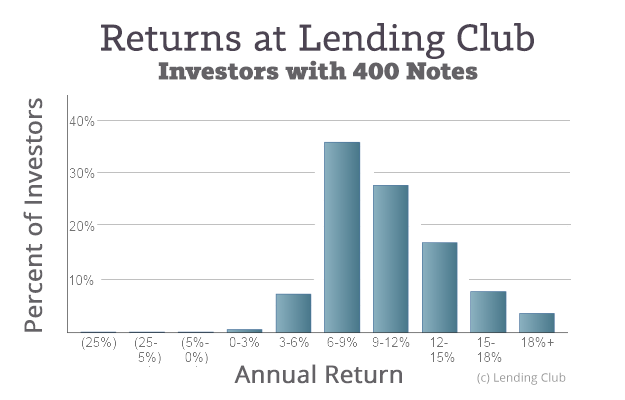
As seen in Lending Club’s chart above, if you diversify your investment across hundreds of loans it is actually sort of difficult to lose money. Actually, there is a small debate about what the correct point of diversification is, but most agree it is 200 loans. Stick to at least that number or more and you’re very likely to have a positive return. Of course, since the smallest note you can purchase at Lending Club is $25, this means the minimum investment for people is generally $5,000.
Read more: The Complete Guide to Diversification at Lending Club
#2: Keep your account fully invested
As our loans get paid back, the cash will begin to build up in our account. This uninvested cash earns no interest, so we have to keep reinvesting it or else it brings down our overall return. The easiest way to stay fully invested is to activate Lending Club’s Automated Investing tool. This tool will automatically reinvest any available cash into additional loans using whatever loan grades you select beforehand. You can even invest using a filter. This tool makes peer to peer lending a near-passive investment!
If you don’t feel comfortable using this tool, or have really specific filters that the tool fails to grab (IE: F and G-grade loans), then it is important to set up a rhythm or schedule to do this yourself. Lending Club adds new loans to their platform at 6am, 10am, 2pm, and 6pm PST (pacific standard time) each day.
Read more: Fight the Mud of Cash Drag with Automated Investing
#3: Increase the risk in your portfolio
When most people begin at Lending Club, they start with the safer A and B-grade loans. But as time goes by, many begin to feel more comfortable with it, and decide to take on more risk. The reason? Higher returns. Here is a chart Lending Club has released showing investor returns by loan grade:
As you can see, people who take on higher risk begin to experience higher returns, the best yearly ROI being in E-grade loans @ 9% (surprisingly, not at F/G-grades).
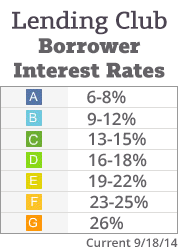 However, focusing your investment away from the safer A and B-grades and into the riskier C-G grades also means you are increasing the likelihood that your investment’s return could go down. In a bad economy the unemployment rate goes up, so more borrowers than normal default on their loans. The investments hit the hardest are those that focus on riskier borrowers (the lower loan grades); safer A-grade loans default way less often. So you will need to choose the level of risk for your account that is right for your particular situation.
However, focusing your investment away from the safer A and B-grades and into the riskier C-G grades also means you are increasing the likelihood that your investment’s return could go down. In a bad economy the unemployment rate goes up, so more borrowers than normal default on their loans. The investments hit the hardest are those that focus on riskier borrowers (the lower loan grades); safer A-grade loans default way less often. So you will need to choose the level of risk for your account that is right for your particular situation.
Read more: Risk Tolerance 101: Which Loan Grades Should I Choose?
#4: Filter for loans with no previous inquiries
Lending Club actually does a great job at assigning these loan grades. The technical term for this practice is called ‘pricing’. Interestingly, Lending Club’s pricing isn’t totally accurate. For example, some B3 graded loans perform better than others (courtesy of NSR):
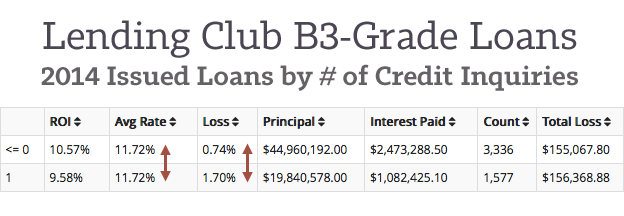
As you can see, we can increase our overall returns by doing a bit of extra filtering ourselves. The subject of filtering is probably the most complicated corner of peer to peer lending, and the vast majority of investors (including myself) don’t really feel complicated filtering is worth the time commitment. However, simple filters like Inquiries in the last 6 months=0 continue to be great. This particular one is used by almost every investor who filters his or her loans.
You can find the Inquiries filter in the sidebar on the left side of the Browse Notes screen. Slide the slider down to zero and click Filter. One click and (historically) you have increased your ROI by 1% or more. Of course, there is no guarantee that this filter will continue to work forever, but in November 2014 it still seems to be the case.
Read more: The Filters I Use to Invest at Lending Club
#5: Invest through an IRA
Right up there with the miracle of compound interest is the benefit of tax-free accounts. And most investors don’t realize how ugly taxes can be on peer to peer investments. This is because peer to peer investments don’t have a special tax rate like capital gains does (stock market investing). Instead, you will pay the same rate that you earn on something like a savings account. For some investors, this means they lose 30% of their p2p earnings to taxes.
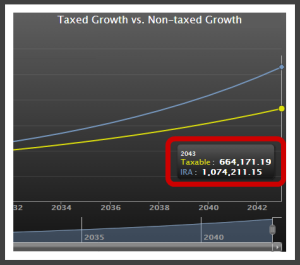 Lending Club helpfully offers their lenders the ability to open a self-directed IRA (regular or Roth) or roll over a 401k, and the benefits of a self-directed IRA are stunning. Say you are 35 years old and open a Lending Club IRA with $5,000, adding $5,000 per year that grows at 8% and closing it when you retire at age 65. With the IRA you would end with an account worth $662,000. If you used a taxable account all those years and were in a 30% tax bracket, you would have just $414,000. That is a tremendous difference of $250,000.
Lending Club helpfully offers their lenders the ability to open a self-directed IRA (regular or Roth) or roll over a 401k, and the benefits of a self-directed IRA are stunning. Say you are 35 years old and open a Lending Club IRA with $5,000, adding $5,000 per year that grows at 8% and closing it when you retire at age 65. With the IRA you would end with an account worth $662,000. If you used a taxable account all those years and were in a 30% tax bracket, you would have just $414,000. That is a tremendous difference of $250,000.
You give up liquidity with an IRA.
Of course, you give up liquidity with an IRA, which means you are limited in your ability to pull your money out if you suddenly need it. Most people exit a Lending Club IRA by transferring it to another investment, which requires paperwork, or by withdrawing it in cash, which means you get hit with a penalty. So if you’re an investor who doesn’t feel comfortable locking money up in Lending Club for a lengthier time period, you may want to stick with a regular taxable account.
That said, I personally invest through a Lending Club IRA (see my returns) because I trust this investment so much, and this strategy could likely mean huge results for me in the long run. Peter Renton at Lend Academy is another serious investor who has publicly stated that “he is no longer adding new money to taxable accounts” because the benefits of an IRA are so huge.
Read more: Retire Well with a Lending Club IRA.
Two More Complicated Ways to Increase ROI
For those who are interested in spending a bit more time on this investment, there are a few extra things that you can do to potentially bump up your returns. Keep in mind that both of these mean a more active investment. I personally avoid them because I prefer my investments to be as passive as possible.
#6: Explore filtering more deeply
Earlier we showed that the simple filter of Inquiries = 0 is a great way to a increase your returns. However, this is a complex subject that can actually offer great potential to those willing to explore it more fully. A good introduction is my latest post on filtering. You can also read my eBook (15 pages about filtering) or watch my video series on it.
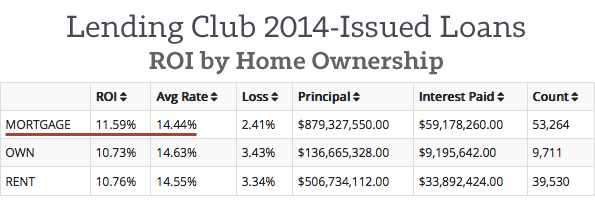
In essence, filtering is a form of arbitrage. It means we find weaknesses in Lending Club’s assigned interest rates, and then exploit these mispricings to increase our overall return. The most effective way to exploit this mispricing is actually not with simple filtering, but by creating your own pricing model/algorithm, using it to discover Lending Club’s mispricing on a holistic level. However, creating a custom algorithm is beyond the ability of 99% of investors. To help, sites like LendingRobot allow investments through an independent credit model, so you may want to check them out.
I personally earn a return of around 10% per year in peer to peer lending (see my returns). While the main driver behind this higher-than-normal return is the higher risk I take on, I feel a second reason is the (non-algorithm) filtering that I’ve been doing ever since I began.
#7: Buy and/or sell loans on the Foliofn secondary market
Peer to peer investments have been classified by the SEC as a security. Not only does this mean we have great regulatory oversight on our investment, but we also have the ability to buy and sell loans on a secondary market. Lending Club’s secondary market (operated through Foliofn) is actually really huge, with over 100,000 loans commonly available for purchase:

This marketplace is sort of a huge Wild West in peer to peer lending.
This marketplace is sort of a huge Wild West in peer to peer lending. Investors have the potential to earn a lot if they understand it, but they also can lose their shirt. This is because, on the whole, Foliofn is far more complicated than the simple Browse Notes area of the primary market, and its website can feel somewhat clumsy. Overall, it is a bit speculative.
Selling issued loans: One strategy people have used, including myself, is to sell notes on Foliofn that have gone late. Sometimes there is a marginal benefit to actively selling your late loans at a discount instead of passively waiting for them to default. You can read more in my article: How to Sell Your Late Loans. However, people have stated this strategy does not work as well as it used to.
Buying issued loans: Another strategy people employ is buying notes on the Foliofn secondary market. For some investors, like those in Texas, the primary market is not available, so Foliofn is the only p2p investing open to them. The good news is many have earned great returns here as long as they try to keep things simple and stick to the traditional maxim of spreading their investment equally across 200+ notes. Since many people are selling loans on Foliofn in order to liquidate and close their Lending Club accounts, there is an opportunity to find some great deals.
An interesting strategy is NewJerseyGuy’s approach, which he has actually written about in a guest post on PeerSocialLending.
I am not that experienced in actively buying/selling notes on the secondary market. The primary market works great for what I need from it (great passive yield). That said, I personally know investors who regularly earn over 20% per year by getting really involved on Foliofn. However, these are incredibly smart and talented people who have taken lots of time to learn the ins and outs of this Wild West economy. If this sounds appealing to you, the Lend Academy forum is probably your best bet for a starting place.
A Final Simple Strategy: Stay Updated
Peer to peer lending is still in its infancy. Even though Lending Club has been around since 2007, they are just gaining traction as a company. It took them five years to issue their first billion dollars in loans. Today they are issuing this amount every three months!
As a result, this avenue of investment will almost certainly experience some major changes that will impact retail investors like you and me. It is probably a good idea to subscribe to the LendingMemo newsletter and keep tabs on what’s happening. While the future of p2p lending is unknown, the changes will take us less by surprise if we remain active in the conversation.
[image credit: Stefan Erschwendner “Strategy” CC-BY 2.0]
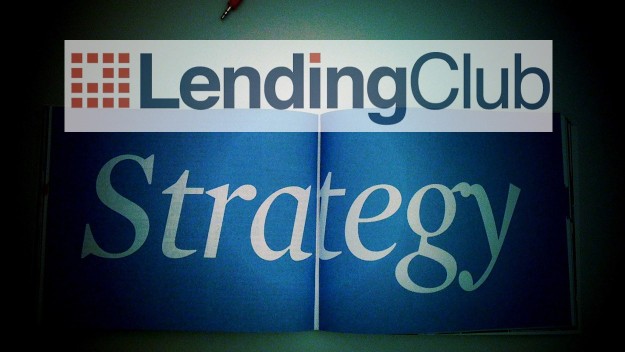
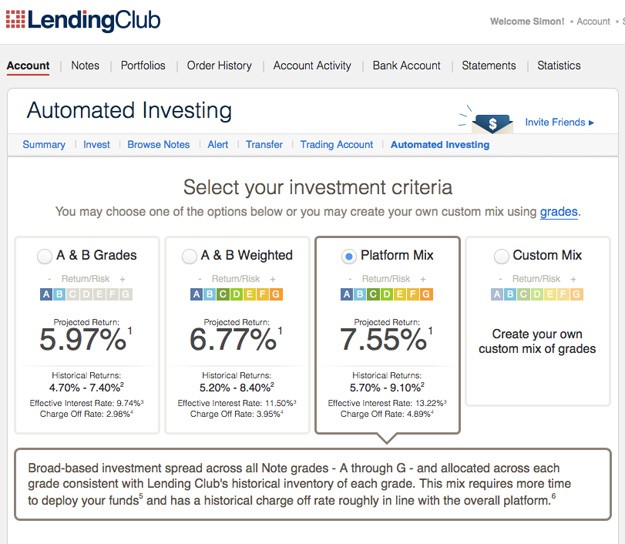
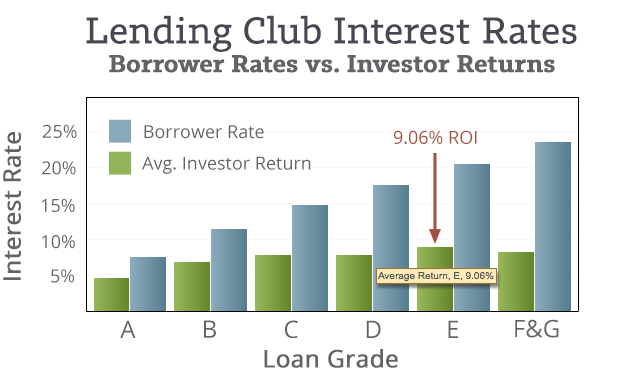
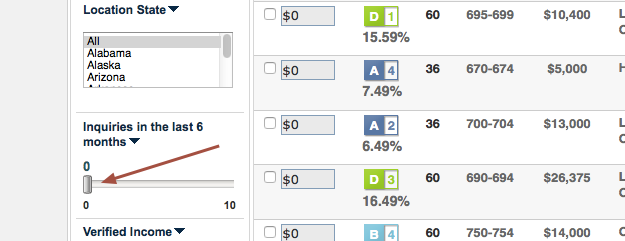
I have come to view the main purpose of independent modeling to be protective, preventing a fox guarding the henhouse situation where originators grade their own loans. There may still be some opportunity to outperform an index, but it is modest and secondary to the protective element. Returns are “increased” in stressful situations like the mortgage meltdown when you avoid holding loans that sour much more than their credit grade suggests, something impossible to do without your own due diligence. Sure, marketplaces have reputational risk against scraping the bottom of the barrel for borrowers, and right now there’s plenty of opportunity to find enough good borrowers. However, shareholders have a bottomless stomach and a gaping maw for ever-higher EPS. Ask New Century Financial, Countrywide Financial, First Federal, Downey S&L, Washington Mutual, and a host of others how well their reputations prevented malfeasance.
Thanks Bryce. I totally agree. I could care less about doing all this incredible work of creating a model for the small performance boost this gives. Moreso, I’m glad there’s modelers like yourself making sure the quality is being kept up to par for the rest of us.
my understanding is lending club’s site does not allow late notes to be sold
Hi Ron. It definitely does. It’s just more complicated.
I have only 4 months investing in p2p lending. I’m using lendigclub as the investing platform.I’m noticing a weird trend in my 520 notes. I already have 11 of them fully paid that is not good. Any of you have had that kind of trend. Is lendingclub refinancing their own notes?
Francisco,
Borrowers can repay their loan at any time.
If you’re a smart borrower with a short term liquidity problem, you get a Lending Club loan to increase your FICO enough to qualify for a 0% balance transfer card and pay back your LC loan.
I appreciate your guide, you might want to your math on the taxation piece. If you invest $5,000 for 30 years @8% It would not = the $600,000 you mentioned above.
You take the compounding interest into account? I didn’t do the math but it’s not making only $400 (8% of $5k) each year.
The number is 653,220.14 compounded monthly.
http://www.getsmarteraboutmoney.ca/tools-and-calculators/compound-interest-calculator/compound-interest-calculator.aspx#.Vs84R5wrJqM . Total invested 155000 (original 5000 +30X5000) the actual interest earned is
498,220.14 I had to to use this calculator. Stevin if you spent a couple minutes on the internet looking for the right calculator you could have discovered these results yourself.
PS what were your results if not the above numbers??
LendingClub.com is now available in Texas. I’m in Texas with a small but growing account on Lending Club. Thanks for the great article!
I have been investing in Lending Club loans since 2013. My returns have steadily declined from around 9% to 6%. In the last couple of months the written off bad loans have reduced my return to just about 0.
My portfolio is very diversified with over 2200 loans in all categories from A-F. Approx 75% of the loans are in A-C, 25% in D-F.
Can you make any suggestions of what I should change to start earning a reasonable ROI again?
I adjusted the “inquiry” filter as you suggest in the above article.
Hi Peter,
I’ve done a good amount of research on these loans and would be happy to give you some advice.
I’ve looked into all of the data published by LC, and I’ve found some trends in default rates. Annual Income being the biggest and most powerful. 0 inquiries is another but not nearly as effective. I’ve just started investing in these loans so I have no personal experience, but if you play with the data that’s given you can see statistical significance in income, inquiries, accounts opened in 24mo. Those are the 3 I use. I pull the info into Excel and analyze the data to find trends. If you want to discuss in more detail, respond and maybe we can exchange a few emails about your strategy. Cheers.
Hey Matthew – I’ve been investing in Lending Club for a few months now. I’m also fairly proficient in predictive analytics and data modeling in Excel. Where exactly do you go in LendingClub to export data that includes results of actual loans? So far, I only see that I can download the results of my own browsing/filtering of available loans. Thanks
Nevermind…..I think I answered my own question. I had never clicked on the “Statistics” section on the site before. Sweet….more analytics to do in Excel!
Hi – Saw your comment and am introgued about mining LC’s data. Where can I download their published data on historical notes? What other insights have you found? I am highly interested/motivated.
Thanks.
Nikhil
Hi – Saw your comment and am introgued about mining LC’s data. Where can I download their published data on historical notes? What other insights have you found? I am highly interested/motivated. Kindly let me know.
Thanks.
Nikhil
If you have an account, you can login and click on “Statistics” towards the top right, then click on “Download Data.” I’ve been able to glean some information from the data which I then apply to my filters when browsing available loans, but the thing is…..you would have to keep pulling the same file on numerous occasions to continue testing. You basically choose what year data (loans issued in), and it gives you a ton of details, but the most important piece, the “current status” will obviously continue to change overtime. i.e. – loans can always move from Current, late 30 days, late 60 days, default, charge off, or maybe back to current. So, your analysis will also always change each time you pull it. I guess you’d have to keep an ongoing record to test for consistencies in each file you test. I’m not sure I have enough time for that, but it’s still some interesting data to play with. Right now, my filters are to use 0 inquries, $10,000+ monthly income, and to avoid certain states and certain loan types – I can’t remember which ones right now – I have the filter saved in my account.
Thanks Brian. You’re right, the analysis will need to evolve as the data changes. I’ll play around with it and report back. Thanks for the info.
Hey guys, I am new to this learning to invest thing and p2p lending. My question is, do you think it would be even worth it to just start with an investment of 100-200 dollars in a lending club account(4-8 notes) or would it be pretty foolish and cause quick defaults? All advice would be welcome! Thanks!
I think it would be wiser to invest it in the S&P 500 with a share of VOO. But if you want to play around with it and you’re willing to risk losing half of it if you get unlucky, then go for it! You lose diversification by only investing in 4-8 loans which makes it a riskier investment. It could work out, but if 1 of the 8 default, your return overall will definitely be negative.
That is good advice, I have actually been wanting to invest in index funds as well. I think I am going to throw a few hundred into that as well, just really trying to learn the ropes and such. I have heard index funds are the way to go!? But the lending club asset appeals to me so lets hope all my loans don’t default right away!
I would recommend VOO since it mimics the S&P500 and the expense ratio is the lowest. It’s an ETF so it’s traded, not a mutual fund which will normally have a high minimum investment like $3k or $10k.
With Lendingclub loans if you’re going to only invest in a few at the min price ($25), I would do some data analysis and find out very specific ones you want to invest in. I would personally recommend very high annual income like $150k or $200k+, and then 0 inq in 6mo, and other things like that. But do the analysis yourself, you can afford to wait for the perfect loans since you’re only buying 4-8.
Wow thank you,
I really appreciate the great advice! I think that I am also going to toss some money into VOO because it doesn’t have those high minimums, I am just anxious to get started on all this.
I started investing in lendingclub loans a few years back with $3000. At first my loans were paying off well with a return of 10% (or close to it). Since then I’ve increased my investment more than 10 fold. My return has dramatically been reduced, about 1/2 of the monthly payments are written off to bad loans. At this point my return is about 6%.
Implemented some changes a few months ago after reading some tips on what loans to avoid. Have not seen any major change in returns yet.
Looking at when the loans default — you would need to wait 2 years into 36 mo, or 3.5yrs into 60mo loans to find out whether or not your return is doing well. One year in is still too young because you haven’t experienced too many defaults. Loans do not default equally in every month. after probably about 4-5 years you’ll have a good idea of whether or not your strategy is paying off. You probably won’t see any big changes just yet. wait another couple years.
Thank you, Matt!
Just an update on my returns from LC. November was the first month in the three years that losses where larger than interest income. December was a little better with a meager 2.5% net income.
Stopped automatic investments for the time being until I can figure out a strategy for turning things around. Or putting my money somewhere else.
What do you guys think about this scenario? – I want to buy a used car for about $20k. I have about $80k in the bank, but don’t want to see that much cash go out the window at once for a car (which is always a losing investment). Would it make sense for me to take a loan for the car for $20k at about 4%, and also invest $20k in LendingClub notes, aiming for returns of about 9% and then using the P&I receipts from LC notes to pay for the car note, pocketing the extra interest? My car loan would be about $368/mo, and my LC receipts would be about $415/mo, so I would also re-invest the difference of $47 each month for additional returns. One of the basic rules of Finance is to make sure you have more interest income than interest expense, and this would seem to fit that bill. Is it worth the hassle and the risk, though?
BTW, I do have experience thus far with LC (about $6k invested for 5 months so far), and have done my own stats research to set my filters and auto-invest targets.
Why don’t you pay cash for the car and stop being a fool. A car is to get you from A to B. unless you are trying to be nigerrr rich and impress people (in that case you have a maturity issue). A car is a liability, and investing is an asset. take it from me. A wealthy fat white guy….. never take a loan if you have cash.
I wouldn’t call a $20k used car trying to impress people, yet it will be the most expensive car I’ve ever bought. It will be a 4wd truck, so it will have to be about 8-10 years old to get it down to $20k. You sound like an idiot, but in regards to your cash comment – I typically agree with being debt free, but this was just an idea – If I can make more money with my cash, I’d rather not get rid of it. It could give me more buying power down road for something else.
Ha! I\’m sorry, Brian, but $20,000 for a used vehicle is absolutely ridiculous. We\’ve had reliable used vehicles bought outright for less than $1,000!
why is inquiries = 0 a good filter? What does that say about the lender’s ability to pay loans on time?
@akash – I don’t think the stat necessarily says anything directly about one’s ability to pay loans on time. Rather, there is historical data that points to correlations in the loans of inquires > 0 having an increased chance of defaulting (more than those with 0 inquiries)
Hi, I am a 20 year old college student always interested in new and different ways to make money. I don’t have a lot of money to invest, and am just starting to read up on peer to peer lending. I was curious if there is money to be made with small amounts of money in peer to peer lending, I thought about trying Lending club with the minimum start up of $25 dollars, and if that went okay investing a couple hundred and slowly investing more. Is this worth my time or should I just save up a larger amount then invest?
AJ – You would want to start with more than that if you’re doing Lending Club. The smallest increment you can invest into one loan is $25, which means you’d either lose all of that, or make like $1-2 in interst on it over the course of a year. They recommend having about 200 different loans in order to stay diversified, which means having $5000. I have about $6k in mine, and I’m not all that happy with it. It’s only making like 6% annually so far. If I were you, I’d just save up enough to just buy a no-fee mutual fund. I use Scottrade for investing in the markets. You can find mutual funds that have no transaction fees and no loads and give you a good mix of a market.
One word on ETF investing: WiseBanyan. This service has no fees and no minimums, truly free investing. They also have helpful features like tax loss harvesting. They beat Betterment and all the others I’ve looked at.
$25 is not enough. See the sidebar. You need at least $2000 to begin p2p lending, and that’s only if you stick to A-grade notes.
well its the 1st week in feb 2017. just got my statement saying I lost 319.. this month. If this continues I will lose any gains I had gotten in the last1 1/2 years in the next 5 months. by the end of the year I will be 1500 in the hole. That is roughly 5% of the amount I have invested 37000. with a total loss of about 10% for the year. With the risk I was taking I figured it was worth 5=8% but there is no reason that my portfolio of over 2000 notes should be making negative numbers. I think there is something rotting in denmark Also why is lending club sending out surveys about how I feel about the amount of money I am making. I seen someone had posted that they were stopping investing and as of right now I am too.
Yep, I paused my automated investing as well. I don’t have exact figures on recent losses, but portfolio-to-date is averaging just over 5% now; had the account for almost a year; supposed to be getting between 6-8%, a figure that has also been lowered recently with some adjustments LendingClub has been making. I’m not liking my risk to reward too much anymore.
Brian once again you sound like a fool. How can you sit here and say that you don’t like your returns in your money. You know there is no where that you can get 5-6% steady. Your just mad because someone defaulted on your loan. That’s the risk and reward. You lose on some but make on most. Your an beginner at investing. You shouldn’t be giving advise. LC is an awesome tool. People just get there butt hurt when a loan defaults. Well grow up you fool. That’s the risk asociated with investing.
Listen, Chicken Alfredo – Stop being an a-hole and acting like you know me. It’s not just one loan that defaulted and drove me up a wall – I know how this works. I’ve had over 330 total loans, with about 5 charged off and 9 currently late, which is driving my adjusted estimated return to just over 5%, when it’s supposed to be between 6-8% for my mix of loans (according to LC’s historical calculation). I’m aware that 5% is generally a good return on an investment, but at this rate I’m going in the wrong direction as the loans mature even more, and LC’s estimates are not very accurate. Who said I was giving anybody advice (not “advise”) to anybody? This is is just people sharing their experiences, and that’s what I’m doing. You certainly don’t sound like any kind of savvy investor yourself. You sound like you just crawled out of your trailer and stuck up your satellite antenna to beam a bunch of hate on the interweb. Not really contributing much.
I am getting less than 3% on over 2000 loans and the risk I was taking believe should be giving 6-7% at least. I am a seasoned (and accredited) investor with less than 1.5% of my invest-able (excluding my home) assets in lc. I am disappointed also. I was hoping to find some where to put some cash to replace some of the nonexistent bond returns but so far This isn’t it. I only started investing about a 1.5 years ago because kansas wasn’t allowed to do p2p. This could be a very good investment vehicle but it is obvious to me that they still haven’t worked out all the bugs yet. More risk should equal more reward but with an economy that is still humming along I believe our returns should be better.
Thus far with Lending Club, I’m getting annualized returns off 11%. With WiseBanyan, my return is 6.50%. My allocation is 52% stocks and 48% bonds.
Thank you for the above tips which were really helpful for me as not only for investing part but as well as helpful to those individuals who have bad credit scores for getting a loan. peer to peer lending is basically private money lenders which is the best place for the people to get loans easily. I am planning to invest in peer to peer lending with p2peasy.
Are the historical returns that LC post based on reinvesting payments as they come in or are they based on allowing payments to just sit in the account until thr end on the loan term?
Norman – If you’re invested and looking at the projected return of all current investments, then it’s based on the historical return of just those investments, taking into consideration the possibility/probability of defaults. If you’re setting up an auto-investment program for the cash returns of loans, then a projected return would include re-investing the cash payments. There’s probably better explanations on the website’s FAQs. Keep in mind that the majority of cash that sits in your account (pending auto-reinvest or other actions) comes from loans being paid in full. I’ve experienced a lot more defaults that I ever would have anticipated, and it’s for all types of loans, so I’ve begun just pulling all of my cash out as it becomes available. Too much work and/or uncertainty for just a 3.5-4% return.
I find that the historical projections of return on investment highly inaccurate. For my mix of loans that were automatically selected the yield has been negative for the last year and i continue to loose money every month.
The yield is probably lower for my bundle of loans because I’ve stopped investing in new loans. I withdraw all cash at least once a month and invest in the market.
Bonds are much safer and give me a guaranteed return.
Pater – While I agree with your LC approach at this point, I’d be hesitant to continue investing in bonds. The yields will be rising for years to come, thus crashing the value of the bonds. I have been going short on bonds, and it’s paying off well.
Great piece of information over here.
Lending Club is a great platform, also diversifying your investment among platforms can disminish the risk. I think lending club is a good choice. I was getting really good returns investing in LC a couple of years ago. Loved this article!
Thanks for sharing!